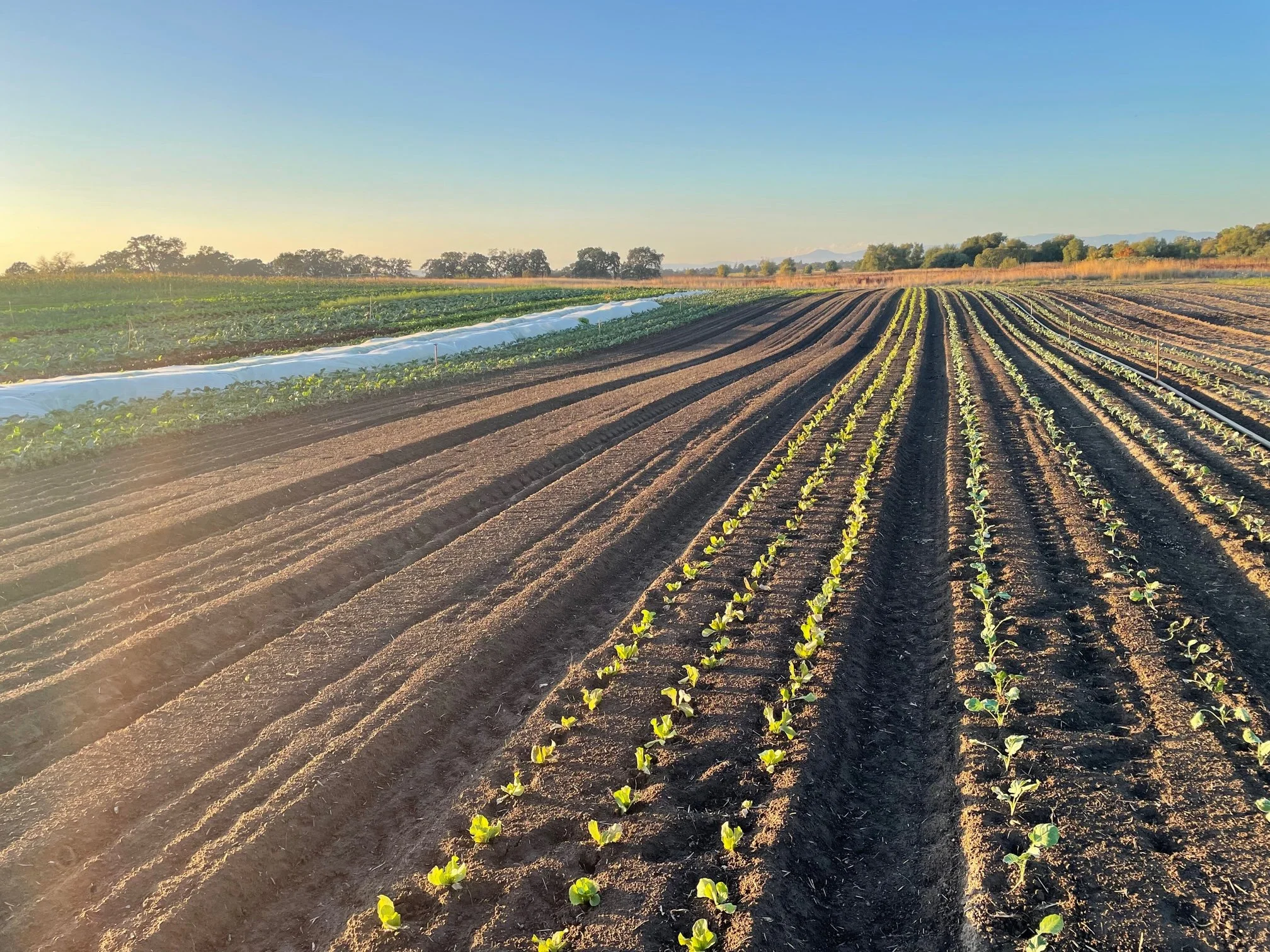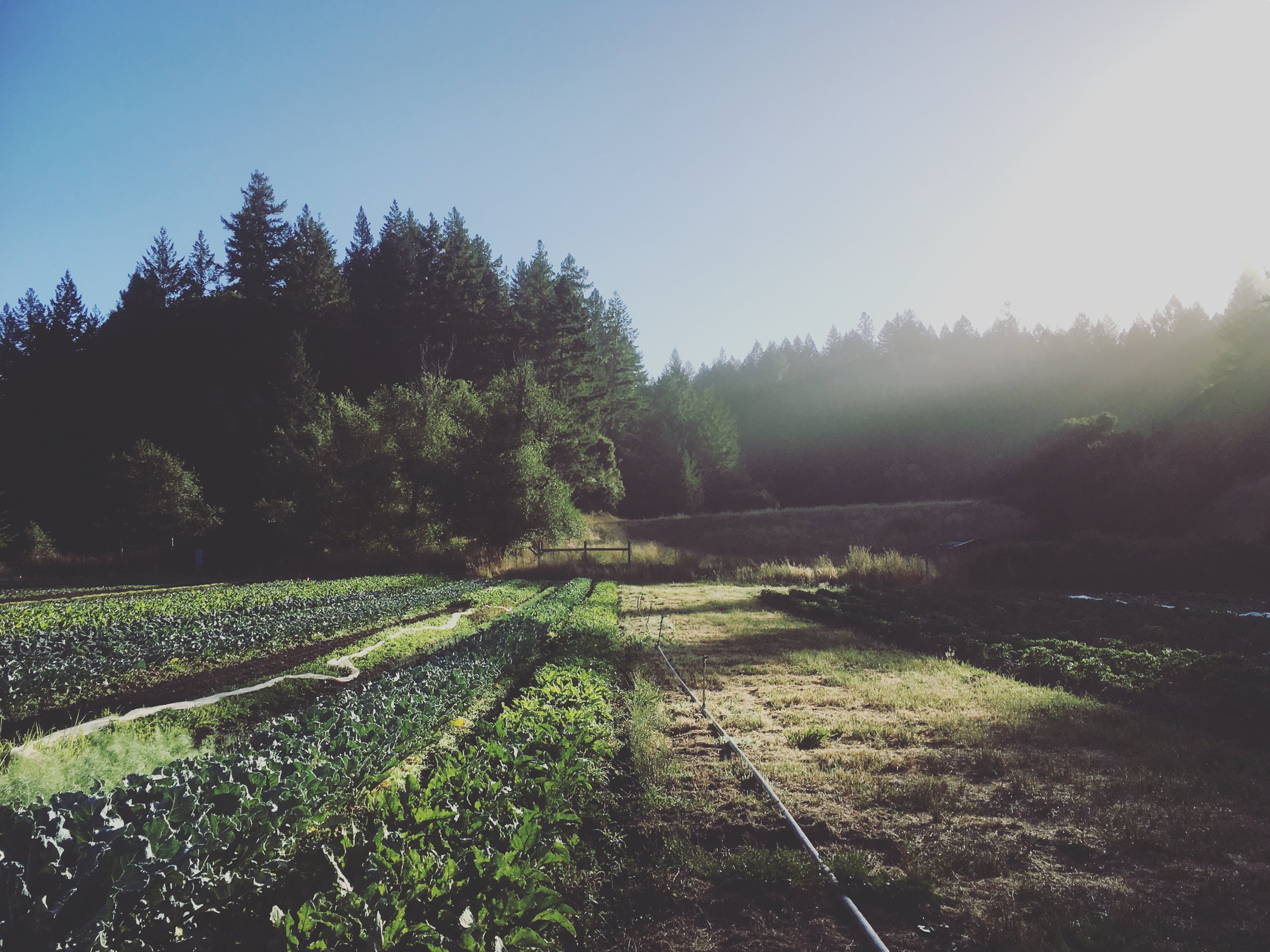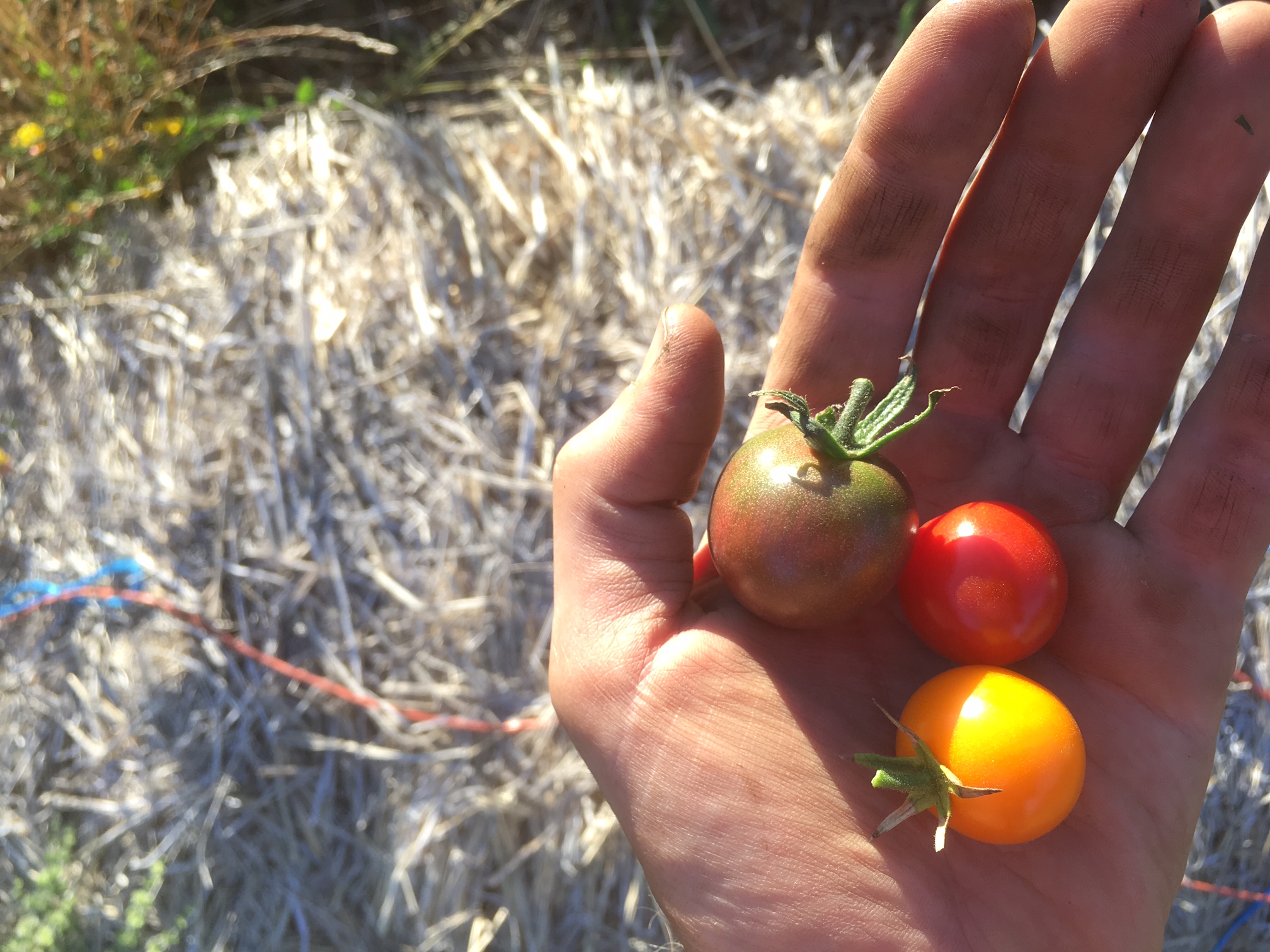What a week. This heat means all-hands on deck just keeping things alive and pushing our water (filtration) system to the max.
But aside from the thermometer, and some droopy looking plants, there's lots to be exited about on the farm this week. Just 'cuz we could, we harvested a row of new potatoes this week! And the buckwheat is looking great....
This photo makes an agro-ecological farmer's heart glad. You may have noticed the large Chia like fuzz covering the area of ground next the onions as you walk out to the main fields. Now grown to a respectable dimension, this is a summer cover crop of buckwheat, in the spot where, likely, 2018's garlic will be planted.
A cover crop is a crop that a farmer plants primarily to feed the soil rather than people, and they are a vital piece of closing the loop of soil health and fertility on a farm.
Cover crops serve a myriad of functions: For starters, their dense living root systems enrich the soil below, both chemically and biologically. Did you know, much soil life cannot live without living root exudates in their universe? In all seasons, but especially during a rainy winter, cover crop roots protect and hold the soil, preventing erosion via water and, in the dry season, erosion via desiccation and wind. Buckwheats roots are also known to extract phosphorus from the soil. Phosphorus, a vital element in plant growth, is then stored in Buckwheats tissues. When the plants are then incorporated back into the soil, this nutrient becomes available to the next crop along with lots of other organic and carbonaceous matter, feeding the soil universe.
Above ground, cover crops can also outcompete and supress weeds: Buckwheat, in particular, takes off quicker than any weed on the farm ... and that is saying something. And when buckwheat blossoms... it smells incredible, and provides food for thousands of pollinators on the farm, a much needed buffet for our six legged flying friends at the end of the long, dry season.
So make sure to say hello to our friend Buckwheat on your next trip out to the cherry tomatoes.
And stay cool out there!
See you in the fields,
David
THIS WEEK'S HARVEST: Yukon Gold Potatoes, Heirloom Tomatoes and New Girl Tomatoes, Italian Eggplant, Cured Cipollini Onions, Scallions, Sweet Peppers, Crimson Lee Hot Peppers, Jimmy Nardello Sweet Peppers, Bell Peppers, Summer Squash, Loose Radishes and Hakurei Turnips, Striped Armenian Cucumbers, "Sarah's Choice" Cantaloupes and Chanterais Melons, Broccoli, Kraut Cabbages, Red Ace Beets, Rainbow Carrots, Celery, Olympic Red Kale, Dino Kale, Arugula, Spicy Mustard Mix, Cherokee Head Lettuce
U-PICK in the GARDEN: Amethyst Green Beans, Dragon Tongue Green Beans, Frying Peppers, Padrones, Jalapeños, Husk Cherries, Strawberry snacks, all herbs and flowers. No limit on dahlias.
U-PICK on the FARM: Cherry Tomatoes, Raspberry Snacks, looks like the Blackberries are done for the year
PRESERVES:
- Pesto!: There is a ton of Genovese Italian Basil in the garden ready to be retired into pesto. If you're interested in harvesting large quantities of basil to make into pesto, you are welcome to harvest entire plants from the first planting of basil located right as you walk in the garden gate. If you're unsure which plants these are, please check in with us first before picking. There is a newer succession of picking basil in the eastern half of the garden.
- Kraut Cabbages: No-limit cabbages continues this week for all you kraut lovers. These cabbages don't have to fit in your bag and you may take many. Check out last week 10's newsletter for our favorite simple kraut recipe.
- Pickling Cucumbers U-Pick: Haven't got enough picking cucumbers? Members are welcome to pick more themselves straight off the vine. Let us know and we'll show you where they are in the field
The 2017 Pick-up Schedule:
Saturdays from 8am - 1pm
Tuesdays from 1pm - 6pm
June 17th - December 12th
Farm, u-pick & garden:
Open 7 days a week, sunrise to sunset
FARMSTORE & CREAMERY:
In our barn:
-Hawk Hill Homemade Sourdough Bread: Gabby is away this weekend, fresh bread will return next Saturday. There are frozen loaves available the white freezer in our barn.
In the creamery:
-EGGS! The hens at Hands Full Farm have finally resumed laying eggs in full force! You'll be happy to find eggs for sale again in the creamery (silver) fridge on your right as you enter.
-Dairy to pick-up milk and cheese raised and crafted right here on the land, join the Bramble Tail Herdshare program. Email Aubrie at brambletailhomestead@gmail.com
-Beef Bramble Tail had two steers, Scrunch Face and Tiny Little, slaughtered on the farm this week and the meat is on it's way to be cut into steaks, stew meat and ground beef. They are now taking pre-orders, if you'd like to reserve beef, send Aubrie an email brambletailhomestead@gmail.com. Beef should be ready for pick up in about a week.
-Whole Chickens from Parade the Land in Graton are in the freezer in the back of the creamery
-Sarah Gardon's Jam Be on the lookout for member Sarah Gardon's incredible Elderberry jams in the creamery
-Firefly Chocolate
-Herbal Remedies by Aubrie
RECIPE: Melon Lassi
Melons are at their peak on the farm this week now and will be tapering down for the next couple weeks. To celebrate the melon, here is a delicious recipe Farmers Kayta discovered this week: A play on the tradition yogurt based Indian drink Mango Lassi, it is a cool drink to beat the heat.
Spiced Cantaloupe and Honey Lassi
from dishingupthedirt.com
Cut and freeze your cantaloupe the night before.
Ingredients:
2 cups frozen cubed cantaloupe
1 1/2 cups plain full fat yogurt
2 tablespoons honey
1/4 teaspoon ground cardamom
1 cup ice cubes
pinch of saffron threads for garnish (optional)
pinch of ground cardamom for garnish (optional)
1. Place all of the ingredients (minus the saffron and additional cardamom) in a high speed blender and whirl away until smooth and creamy. Taste for seasonings and adjust as needed.
2. Pour into glasses and garnish with saffron threads and additional cardamom.









